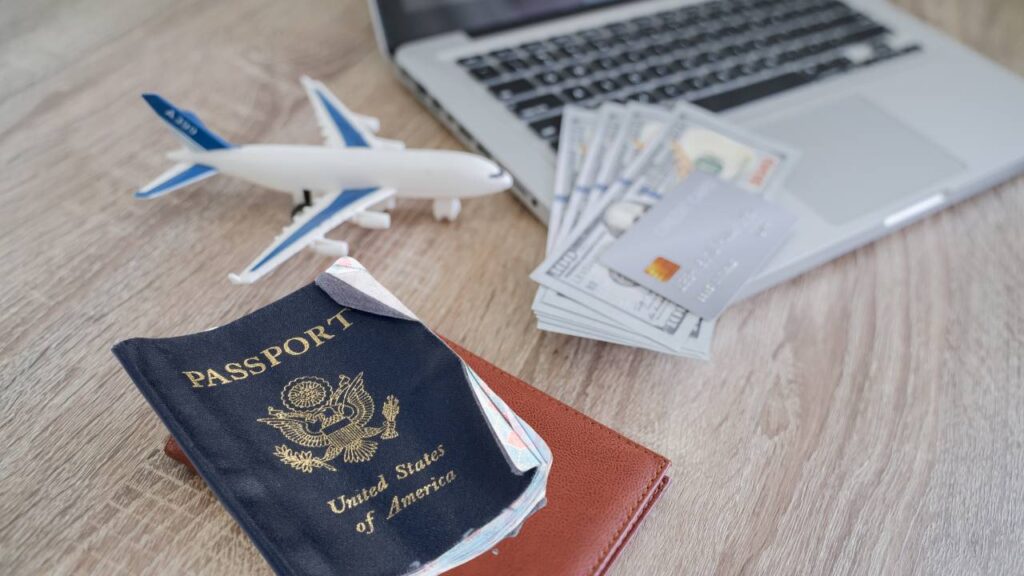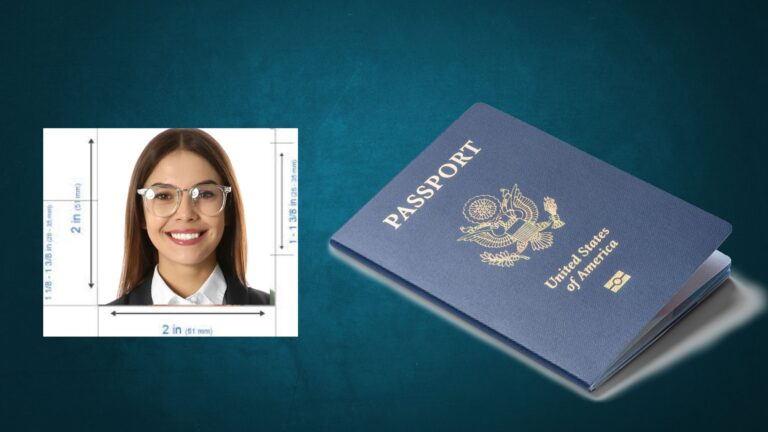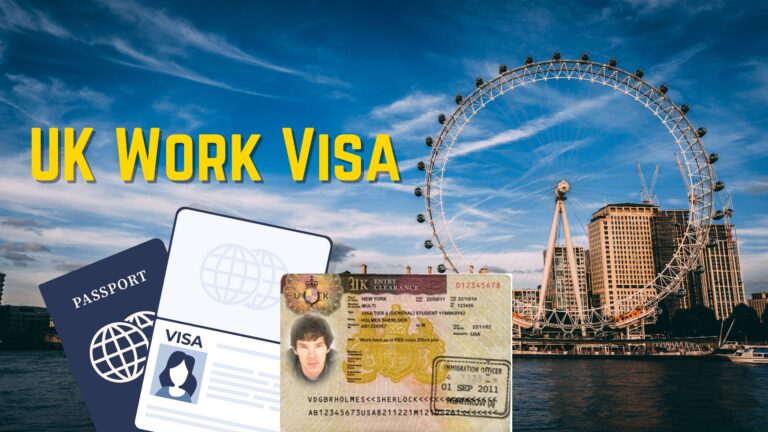Travelers often overlook the condition of their passport until it’s too late. A torn page, water damage, or an unreadable chip, these issues can quickly become major obstacles. In 2025, U.S. border and immigration authorities are more vigilant than ever when it comes to the authenticity and physical state of travel documents. If US passport is damaged, you might be denied boarding by an airline, held up at customs, or even refused re-entry to the country in extreme cases.
This outlines the official stance on damaged passports, clarifies the 2025 rules, explains what constitutes passport damage, and offers guidance on what to do if stuck abroad with a compromised travel document.
What Counts as a Damaged US Passport in 2025?
In 2025, the U.S. Department of State classifies a damaged passport as any passport that someone has physically altered, mutilated, or compromised in a way that interferes with its readability or security. Even minor damage can trigger suspicion at border control or airline check-ins. Modern travel systems use sensitive biometric and visual inspection tools, so travelers should not underestimate this issue.
For instance, if the personal data page is smudged, torn, or faded, automatic scanners may fail to validate your information. Officers need to verify your identity quickly and accurately, so any disruption can cause major issues. Water damage is another common concern. Even small spills can swell pages, cause them to stick together, or distort the embedded chip, making the document unreadable by electronic systems.
Torn or missing pages present a serious red flag. Customs officials may suspect that you intentionally removed visa stamps or tried to alter travel history. A broken chip, common in e-passports, prevents automated systems from retrieving biometric data. This significantly slows down verification and raises security concerns. If your passport includes unauthorized marks, stamps, or writing, officials may accuse you of tampering—even if the damage occurred accidentally.
According to 2025 standards, authorities expect your passport to remain clean, machine-readable, and unmodified. Any deviation from this standard can prevent you from completing your journey smoothly.
Can You Enter the US with a Damaged Passport in 2025?
If You Are a U.S. Citizen
Yes, as a U.S. citizen, you retain the right to re-enter the country even if your passport is damaged. This right doesn’t guarantee a smooth process. Immigration officers must confirm your identity and citizenship before they allow you entry. If your passport is significantly damaged, they will likely pull you aside for secondary inspection.
During this process, officers manually verify your personal information through other databases or ask you detailed questions about your travel history and citizenship. They may review past records or photographs to confirm your identity. This process often takes hours, especially during peak travel periods or when your passport is unreadable.
If your passport chip fails, they’ll likely send you to a manual booth where an officer will input your information manually. This process adds stress and delays your re-entry. In rare cases where officers can’t verify your identity on the spot, CBP may hold you until they confirm your details using additional documentation or interviews.
Abroad and notice your U.S. passport is damaged, visit a U.S. embassy or consulate to request a replacement or emergency passport before you go to the airport.
If You Are a Foreign National
If you’re not a U.S. citizen, a damaged passport creates even more serious issues. U.S. border officers follow very strict guidelines about passport integrity for foreign travelers. They require all foreign passports to remain fully intact, readable, and valid for the entire duration of your stay.
If your passport is torn, stained, or unreadable, you may not get past your departure airport. Airlines must ensure all passengers meet U.S. entry requirements, and they may deny you boarding if your passport is damaged. Since U.S. immigration may reject your document on arrival, airlines risk fines and must cover the cost of returning you to your origin country.
Also, any visa or ESTA authorization linked to your damaged passport may become invalid. Automated systems rely on passport data to match travelers to their records. If your passport chip or machine-readable zone (MRZ) fails, U.S. authorities may deny you entry or detain you for additional checks.
As a foreign national, if your passport is damaged, you almost always need to reschedule your trip and apply for a new passport before attempting entry into the U.S.
How Airlines and TSA Treat Damaged Passports
Airlines and TSA agents serve as the first checkpoint in your journey. In 2025, their systems rely heavily on automated tools to scan and validate passports before passengers board international flights.
If your passport is damaged, check-in kiosks may fail to scan it. The machine-readable zone (MRZ), located at the bottom of the data page, must remain clean and intact. If the scanner can’t read this zone, the machine will flag your passport as invalid, and it will redirect you to a manual check-in counter.
At the counter, agents assess the damage visually and may consult a supervisor before allowing you to proceed. If they determine that the damage compromises identity verification, they may deny you boarding to avoid liability.
TSA checkpoints—especially for domestic U.S. flights—may also reject a damaged passport as a valid form of ID. If your document appears tampered with or shows signs of physical separation between the cover and inner pages, TSA may refer you to secondary screening or ask for another form of ID.
To avoid airport disruptions, inspect your passport weeks before your flight. Early detection gives you time to replace it if needed.
Emergency Travel: What to Do If You’re Abroad with a Damaged Passport
If you’re overseas and damage your U.S. passport, don’t wait until the airport to seek help. Contact the nearest U.S. embassy or consulate immediately. These offices handle such situations and can issue emergency passports to U.S. citizens.
Schedule an appointment online through the embassy’s website. Bring any identification documents you have, such as a driver’s license, expired passport, or birth certificate. Even digital copies help speed up verification.
Embassies generally issue emergency passports within 1–3 business days, although the process may take longer during holidays or staffing shortages. These temporary passports remain valid for a limited time and usually only for direct return to the U.S. If you must transit through another country, check in advance whether that country accepts emergency U.S. passports.
In some cases, the consulate provides a support letter confirming your identity and the emergency passport’s validity. Airlines may request this letter before letting you board.
By acting early and preparing your documentation, you avoid getting stranded abroad with no way to return home.
How to Replace a Damaged US Passport in 2025
If your passport becomes damaged while you’re still in the U.S., you can follow a straightforward process to replace it—provided you submit the right documentation. You must submit Form DS-11, not the DS-82 renewal form, because damaged passports no longer qualify for renewal.
You need to provide proof of U.S. citizenship, such as a certified birth certificate or naturalization certificate. Also need valid identification, like a state-issued driver’s license. Bring both original documents and photocopies.
Submit the damaged passport along with your application. This step helps the passport agency confirm the reason for replacement and prevents misuse of the compromised document. The application fee remains $130 for standard service. If you need it urgently, you can pay an additional $60 for expedited service plus overnight delivery.
Submit your application in person at a Passport Acceptance Facility, such as a post office or court office. In 2025, processing times average 6–8 weeks for regular service and 1–2 weeks for expedited service, depending on demand.
Replacing your passport early prevents last-minute panic and gives you peace of mind before your next international trip.
Smart Tips to Prevent Passport Damage
- You can extend your passport’s life by taking simple precautions. Store your passport in a protective cover or waterproof sleeve to protect it from spills, weather damage, and general wear.
- Keep your passport flat and safe while traveling. Avoid folding it, stuffing it into tight pockets, or carrying it loosely in your bag. Even bending the cover can damage the chip.
- Keep your passport away from liquids. Water bottles, rain, or damp clothing can warp the pages or destroy the biometric chip. Keep the passport sealed and separate when not in use.
- Never attempt to repair your passport yourself. Avoid using tape or glue on torn pages or covers. Such fixes may appear as tampering and make the passport invalid. Instead, replace it properly through official channels.
- Also, create and store digital copies of your passport in cloud storage and on your phone. These copies help prove your identity during emergencies or if you need to replace the document abroad.
To avoid these issues, check your passport regularly and replace it at the first sign of damage. Travel starts with preparation—and maintaining a clean, readable passport is your first step toward a hassle-free journey.
FAQs
1. What qualifies as a damaged U.S. passport?
A U.S. passport is considered damaged if it is physically altered, mutilated, or compromised in a way that affects its readability or security. Examples include torn or missing pages, water damage, faded personal data, a broken chip, or unauthorized markings.
2. Can I enter the U.S. with a damaged passport in 2025?
Yes, if you are a U.S. citizen, you can still enter the U.S. with a damaged passport. It may lead to delays, secondary inspection, or even a manual verification process by Customs and Border Protection (CBP). Foreign nationals may face denied boarding or refusal of entry.
3. What happens if my damaged passport is unreadable by automated systems?
If your passport is unreadable by automated systems due to damage (like a broken chip or unreadable machine-readable zone), it can lead to delayed entry, additional verification steps, or even denial of entry. You may need to undergo manual checks at the border.
4. Can I board a flight with a damaged passport?
Airlines and TSA agents may refuse boarding if your passport is damaged and cannot be validated by scanners. Airlines have strict guidelines and may deny boarding to prevent complications during entry into the U.S. at the arrival airport.
5. How do I replace a damaged U.S. passport?
To replace a damaged passport in the U.S., you must submit Form DS-11, provide proof of U.S. citizenship (such as a birth certificate), and pay the appropriate fee. You’ll also need to submit the damaged passport with your application.
6. How long does it take to replace a damaged U.S. passport?
Standard passport replacement processing times are 6-8 weeks, but if you need urgent processing, you can request expedited service, which typically takes 1-2 weeks.
7. What should I do if my passport is damaged while abroad?
If you’re overseas and your U.S. passport is damaged, contact the nearest U.S. embassy or consulate to request an emergency passport. Emergency passports are typically issued within 1-3 business days and allow direct return to the U.S.
8. Can I repair my damaged passport myself?
No, you should never attempt to repair your passport with tape or glue. Such actions are considered tampering and could render the passport invalid. Always go through official channels to replace your damaged passport.
9. What should I do if my passport has water damage?
Water damage can distort the pages or the embedded chip, making the passport unreadable. In this case, it’s best to replace the passport through the U.S. Department of State by submitting the damaged document and required documentation.
10. How can I prevent my passport from getting damaged?
To prevent damage, store your passport in a protective cover or waterproof sleeve. Avoid exposing it to moisture, bending, or stuffing it into tight spaces. Regularly check for any signs of wear and tear and replace it at the first sign of damage.






